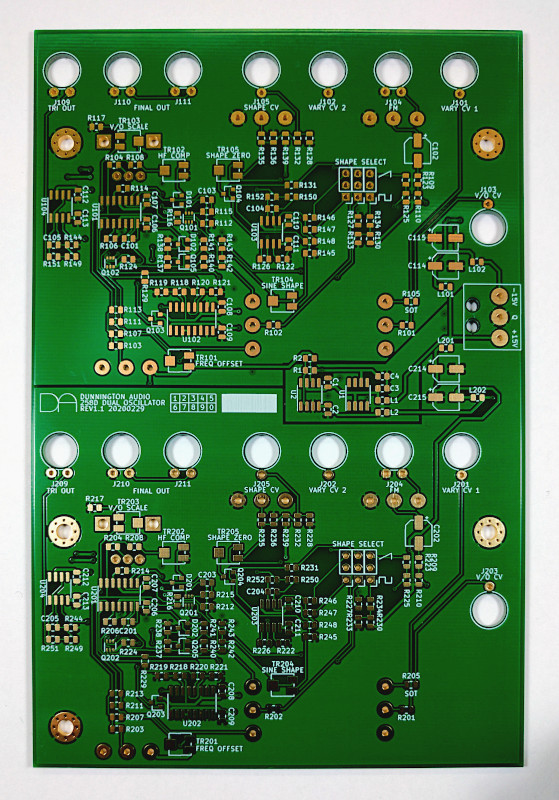The MIDI Universal Converter (MUC) in Buchla format is a DIY adaptation of the project from EDV-Technik.
It’s a powerful and very stable Midi to CV converter offering 24 outputs :
Technical Specifications :
 Rear side of PCB –
Rear side of PCB –
 Example of populated board –
Example of populated board –
 Example of completed unit –
Example of completed unit –
 Notes –
Notes –
- 16 control voltage outputs with a range of 0-10V : Outputs 1 – 8 1.2V/octave, or trig Outputs 9 – 16 1V/octave
- And 8 Digital Output with 0-10 range : Ouputs 17 – 24
 Rear side of PCB –
Rear side of PCB –
 Example of populated board –
Example of populated board –
 Example of completed unit –
Example of completed unit –
 Notes –
Notes –
- PCBs are supplied bare (other components must be sourced)
- No warrenty is given nor implied
